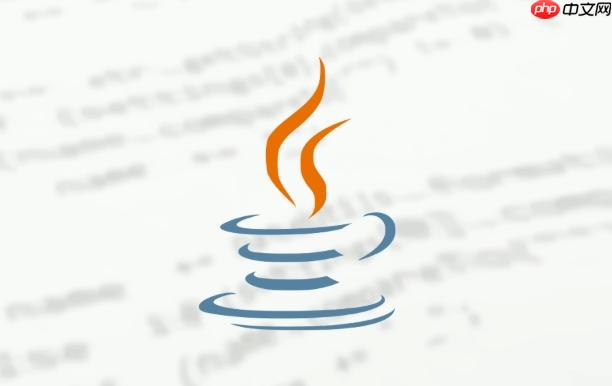库存盘点功能通过Java实现商品系统库存与实际数量差异的记录与报告生成。首先定义InventoryItem类封装商品信息,包含商品编号、名称、系统库存、实际数量及差异数,并在setActualStock方法中自动计算差异;接着创建InventoryCountService服务类,使用Map存储库存数据,初始化时加载模拟的系统库存,提供recordActualCount方法录入实际盘点数,generateReport返回所有商品盘点结果,getSummary统计盘盈盘亏种类数;在测试类InventoryCountDemo中调用服务类模拟P001、P002、P003三种商品的实际盘点,输出各商品差异及整体盈亏统计;最后建议结合Spring Boot与数据库实现持久化,支持Web录入、权限控制、Excel导出等企业级功能,确保流程完整与数据准确。

库存盘点功能的核心是准确记录商品当前库存与实际清点数量之间的差异,并生成相应的盘点报告。使用Java实现该功能,需要设计合理的数据模型、数据库交互逻辑以及业务处理流程。以下是实现思路和关键代码示例。
定义一个库存商品的Java类,用于封装商品信息和库存数据。
public class InventoryItem {
private String productId; // 商品编号
private String productName; // 商品名称
private int systemStock; // 系统库存数量
private int actualStock; // 实际盘点数量
private int difference; // 差异数量
private String location; // 存放位置
<pre class='brush:java;toolbar:false;'>// 构造方法
public InventoryItem(String productId, String productName,
int systemStock, String location) {
this.productId = productId;
this.productName = productName;
this.systemStock = systemStock;
this.location = location;
this.actualStock = 0;
this.difference = 0;
}
// getter 和 setter 方法(省略)
public void setActualStock(int actualStock) {
this.actualStock = actualStock;
this.difference = actualStock - systemStock;
}
// toString用于打印盘点结果
@Override
public String toString() {
return "InventoryItem{" +
"productId='" + productId + '\'' +
", productName='" + productName + '\'' +
", systemStock=" + systemStock +
", actualStock=" + actualStock +
", difference=" + difference +
", location='" + location + '\'' +
'}';
}}
创建一个盘点服务类,负责加载系统库存、录入实际数量、计算差异并生成报告。
立即学习“Java免费学习笔记(深入)”;
import java.util.*;
<p>public class InventoryCountService {
private Map<String, InventoryItem> inventoryMap;</p><pre class='brush:java;toolbar:false;'>public InventoryCountService() {
inventoryMap = new HashMap<>();
loadSystemInventory(); // 模拟从数据库加载系统库存
}
// 模拟从数据库加载当前系统库存
private void loadSystemInventory() {
inventoryMap.put("P001", new InventoryItem("P001", "笔记本电脑", 50, "A区-01架"));
inventoryMap.put("P002", new InventoryItem("P002", "无线鼠标", 120, "A区-02架"));
inventoryMap.put("P003", new InventoryItem("P003", "U盘 64GB", 80, "B区-05架"));
}
// 录入实际盘点数量
public void recordActualCount(String productId, int actualStock) {
InventoryItem item = inventoryMap.get(productId);
if (item != null) {
item.setActualStock(actualStock);
} else {
System.out.println("商品编号 " + productId + " 不存在!");
}
}
// 生成盘点报告
public List<InventoryItem> generateReport() {
return new ArrayList<>(inventoryMap.values());
}
// 获取盘盈盘亏统计
public Map<String, Integer> getSummary() {
int profit = 0; // 盘盈
int loss = 0; // 盘亏
for (InventoryItem item : inventoryMap.values()) {
if (item.getDifference() > 0) {
profit++;
} else if (item.getDifference() < 0) {
loss++;
}
}
Map<String, Integer> summary = new HashMap<>();
summary.put("profitCount", profit);
summary.put("lossCount", loss);
return summary;
}}
通过主程序模拟一次库存盘点过程。
public class InventoryCountDemo {
public static void main(String[] args) {
InventoryCountService service = new InventoryCountService();
<pre class='brush:java;toolbar:false;'> // 模拟盘点输入
service.recordActualCount("P001", 48); // 笔记本电脑少了2台
service.recordActualCount("P002", 125); // 鼠标多了5个
service.recordActualCount("P003", 80); // U盘正确
// 输出盘点报告
System.out.println("=== 盘点报告 ===");
for (InventoryItem item : service.generateReport()) {
System.out.println(item);
}
// 输出统计摘要
Map<String, Integer> summary = service.getSummary();
System.out.println("盘盈商品种类数: " + summary.get("profitCount"));
System.out.println("盘亏商品种类数: " + summary.get("lossCount"));
}}
在实际项目中,可结合Spring Boot和数据库(如MySQL)进行持久化管理:
基本上就这些。核心在于数据建模清晰、业务流程完整,再逐步扩展为真正的企业级功能。不复杂但容易忽略细节,比如差异数计算和异常处理。
以上就是如何使用Java实现库存盘点功能的详细内容,更多请关注php中文网其它相关文章!

每个人都需要一台速度更快、更稳定的 PC。随着时间的推移,垃圾文件、旧注册表数据和不必要的后台进程会占用资源并降低性能。幸运的是,许多工具可以让 Windows 保持平稳运行。

Copyright 2014-2025 https://www.php.cn/ All Rights Reserved | php.cn | 湘ICP备2023035733号